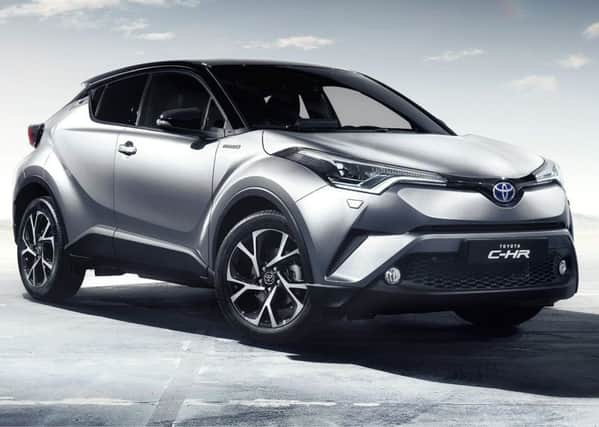Why two powerplants can be better than one


SUDDENLY, the whole world’s going hybrid. Most major manufacturers are going down this route now creating cars with not one, but two powerplants.
It seems crazy that to make a car more economical and less polluting, you have to double the number of engines they have, but it works.
Advertisement
Hide AdAdvertisement
Hide AdAs a result, there are many chunky sport utility vehicles on the road which manage more miles per gallon and belch out fewer toxic gasses than average family hatchbacks.
There is a penalty of course. Two engines invariable cost more to install than one, but prices are coming down thanks to demand from people happy to pay more up front to get 70mpg, 80mpg or more.
Another penalty of hybrid cars is that they are not always the prettiest things on the road.
But Toyota have perhaps broken the mould with one of the most distinctive SUVs around. The C-HR is arguably not an SUV at all, but a coupe (C-HR apparently stands for coupe high-rider) meaning it is a tall coupe.
Advertisement
Hide AdAdvertisement
Hide AdDon’t tell Toyota but it has something of the Nissan Juke about it with aggressive lines and sporty flares. It looks good, but in this market that doesn’t count for much. It’s what it can manage on the road that counts.
C-HR manages 80.7mpg around town and 68.9mpg on a run with emissions of 87g/km meaning you won’t pay road tax. It is the first full hybrid powertrain in this market and, thanks to a hefty advertising campaign, there are quite a few already on the road.
It isn’t perfect. I’m not a fan of the CVT, the continuously variable transmission. Give me a stepped automatic any day. But it is spacious, well-designed, beautifully appointed and quick, managing 105mph and 0 to 60mph in 11 seconds.
At low speeds, the Hybrid version can power itself using its electric motor, so it is very quiet. But when you squeeze the throttle the engine kicks in and the CVT causes the revs to rise suddenly and stay high until you’re up to your desired speed.
Advertisement
Hide AdAdvertisement
Hide AdThe C-HR costs from £27,995 and the test version which has a premium pack (black leather seats and a premium stereo) and pearlescent paint) costs £30,135.
That is a lot of money considering you can buy a very decent SUV for £20,000 or less but the C-HR is well equipped with safety and luxury features.
It has a pre-collision warning system with pedestrian detection, adaptive cruise control, a road sign ‘reader’ and lane departure alerts.
It also has anti-lock brakes, electronic brakeforce distribution, blind spot monitor and stability control systems among others. I love the satellite navigation system and the dual-zone air conditioning and the front and rear parking sensors are great.
Advertisement
Hide AdAdvertisement
Hide AdAdd to that Toyota’s legendary built quality and the five-year, 100,000-mile warranty and you can see why C-HR will find plenty of happy owners.
Toyota C-HR 1.8 CVT
THE CAR FACTS
Price: £27,995 on the road.
Engine: A 1,798cc four-cylinder petrol engine and a 71bhp electric motor
Power: 168bhp combined
Torque: 142Nm and 163Nm combined
Transmission: Continuously variable transmission
Top speed: 105mph
0-62mph: 11 seconds
Economy: 72.4mpg combined
CO2 emissions: 87g/km
Warranty: Five years, 100,000 miles
Summary: Striking in appearance, it’s a futuristic hi-tech machine. Not cheap but you get a lot of car for the money
Rivals:
Mitsubishi Outlander PHEV: This is a plug-in hybrid and has caught on well. At almost £40,000 it’s a good deal more expensive than the C-HR but it has potential to be much more economical.
Advertisement
Hide AdAdvertisement
Hide AdKia Niro hybrid: From £21,295, it’s a cost-effective alternative to the Toyota. Only a little smaller that the Toyota but much cheaper.
Audi Q2: Not a hybrid but there are low-emission high-economy versions with one model managing 68.9mpg. Range starts at just over £20,000. Less extravagantly styled than the Toyota.